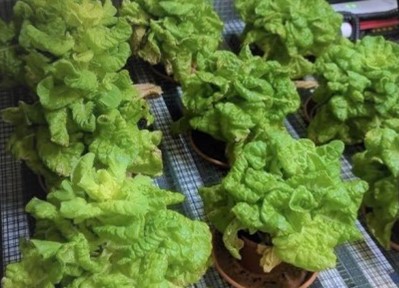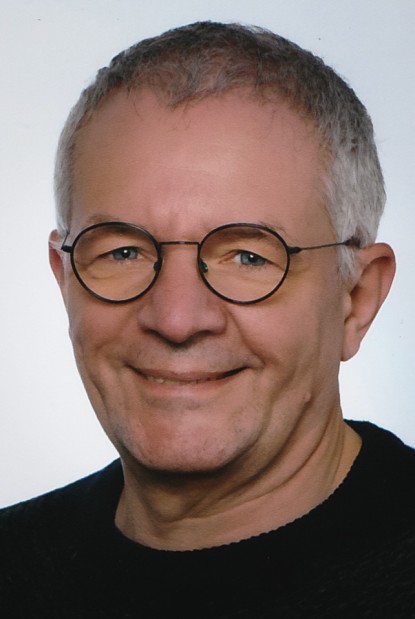Synthetic Biology
Cyanobacteria
Uncoupling industrial production from fossil fuels and simultaneously reducing CO2 emissions are challenges to ensure a liveable future. Cyanobacteria could be one tool for a solution. These bacteria can transform CO2 during growth into organic compounds and require just salt and solar energy. Even though, there are examples of cyanobacteria being used to synthesize products of industrial interest, in general, product yields can be low, or the production costs are too high for a profit.
Astaxanthin
Astaxanthin is a carotenoid with health-promoting properties. It is a potent antioxidant and is widely used in products for cosmetics and healthcare or stock feeding as well as aquaculture. The advantage of cyanobacteria in this regard is the capability to synthesize carotenoids. However, astaxanthin is not produced and yields of correlated precursor metabolites are low. Our current goal is to transform cyanobacteria into an effective platform for astaxanthin synthesis. To this end, existing secondary metabolite synthesis pathways have been extended to provide astaxanthin and ways have been developed to extract the product without killing the cells. We could harvest the newly synthesized Astaxanthin directly from growth medium.
Protein-Synthesis
We have analysed and optimized a set of expression vectors for synthesis of valuable proteins in Synechococcus. On the example of Batroxobin, a snake venom, we can provide a proof of principle demonstrating the capacity of this expression system.
Algae2Meat
The primary objective is the cultivation of microalgae strains for the sustainable bioproduction of biomass and water-soluble active ingredients as starting materials to produce cultured meat. The extracted biomass will be refined into hydrogel precursor, while water-soluble active ingredients (e.g. vitamins, fatty acids, amino acids) will be examined as additives for cell culture media. Both, the hydrogels as well as the active ingredients, will be investigated with respect to their applicability for the 3D-culture of muscle and fat cells. In addition, we express essential growth factors for animal cell culture in microalgae. In parallel, a process for high throughput 3Dbioprinting of meat precursors will be studied. The pre-cultivated muscle and fat cells will be mixed with the biomass plus active ingredients to form a sustainable bioink. Applying a novel bio-screenprinting technique the bioinks will be printed into texturized meat.
Merck Sustainability Hub is funding a collaboration of Fachgebiets BioMedizinische Drucktechnologie, TUDarmstadt and Innovation Fields Science & Technology Office, Merck with Applied Plant Science
Aquaporins
Proteins of the aquaporin family (AQPs) were initially characterized as H2O-conducting proteins in biomembranes. However, previous studies in our research group have shown that the integration of specific aquaporins increases the CO2 permeability of (bio)membranes. This has been observed in oocytes, tobacco plants and artificial membranes. The effects of heterologous expression of these proteins in the single-cell cyanobacterium Synechococcus sp. PCC7002 on photosynthetic rate and other processes, such as growth, are investigated. Synechococcus sp. PCC7002 concentrates Ci in the cell in the form of bicarbonate. CO2 diffusing into the cell is actively converted to bicarbonate at the thylakoid membrane. In addition, bicarbonate is actively transported into the cell by bicarbonate transporters. As a result, the concentration of bicarbonate in the cell is 100-1000 times higher than in the environment. In micro-compartments called carboxysomes, bicarbonate is brought back into equilibrium with CO2 by an enzyme called carbonic anhydrase (CA). The carboxysome is also where Rubisco is located, which is responsible for the fixation of CO2 during photosynthesis.
Enhanced CO2 diffusion across the cell membrane could therefore lead to improved maintenance of CO2 availability to Rubisco. This could increase the rate of photosynthesis.
Environmental Science

High frequency electromagnetic fields (HF-EMF) and plant stress reactions
In recent years, there has been a growing interest in studying the potential effects of high frequency electromagnetic fields (HF-EMF) on the health and development of plants. This interest stems from the increasing prevalence of HF-EMF in our modern environment, with the proliferation of wireless communication technologies and electronic devices. As a result, there is a need to better understand the impact of HF-EMF on living organisms, including plants.
Our project, in cooperation with Forschungsring e.V. (Darmstadt), aims to contribute to this field by investigating how HF-EMF impacts plant stress reactions. By subjecting plants to controlled HF-EMF exposure and monitoring their physiological responses, we have made significant progress in uncovering potential harmful effects associated with HF-EMF exposure. Our findings suggest that HF-EMF may disrupt the natural stress responses of plants, which can have negative implications for their overall health and vitality. This discovery challenges what we currently know about how HF-EMF interacts with plants, as the specific mechanisms underlying these effects are still not fully understood. Therefore, further exploration and research are essential to elucidate the underlying processes and potential long-term consequences.
Understanding the potential risks associated with HF-EMF exposure is crucial for safeguarding the environment, agriculture, and food security. As our project contributes to the growing body of knowledge on HF-EMF and its impact on plant life, it enables policymakers and the public to make informed decisions regarding electromagnetic field exposure. This research can have far-reaching implications, ensuring the responsible and sustainable use of HF-EMF technologies while minimizing potential risks to plant health and overall ecological well-being.
Basic Research: Photosynthesis
An Advanced Model for Photosynthesis
We are collecting plant photosynthesis data from multiple sources under different conditions and feed these into a machine learning algorithm to train an artificial intelligence. The aim is to provide a multivariate model of plant photosynthesis. The project has the potential to improve the current understanding of photosynthesis and open new avenues for sustainable use of light energy.
The unique aspect of this multivariate approach is that empirically measured parameters are processed using AI algorithms. This eliminates the necessity for static models to create correlations with light levels. A model that constantly enhances its accuracy through machine learning is created, ultimately resulting in a more energy-efficient use of light.
C3 Photosynthesis – Basil
Current measurements focus on the PAM method. This uses chlorophyll fluorescence to measure the efficiency and power loss of photosynthesis. A new feature is that the whole leaf is no longer exposed but only small light spots. By this, it is possible to measure different light conditions on the same leaf at the same time, which makes the results highly quantifiable.
C4 Photosynthesis – Maize
In a controlled greenhouse setting, plants are cultivated during their early, middle, and late developmental periods. Photosynthetic parameters such as CO2 assimilation rate, transpiration rate, and stomatal conductance are recorded using gas exchange analysis. Simultaneous PAM measurements enable the evaluation of Photosystem II quantum yield and electron transport rate. Additionally, leaf temperature and plant age are considered. The current goal is to establish correlations between the photosynthesis parameters and light conditions. For this purpose, continuous and pulsed light of different wavelengths and intensities are used.
Applied Science: Plant Centric Light – A Plant Controls Its Light Source
We use machine learning to transform diverse signals from a plant into control commands to vary the growth-light source. To this end, establishing a method of real-time analysis of the plant’s response to its environment is a crucial step towards a comprehensive “plant-controlled” system.
Plant Growth and Stress
By using state-of-the-art analytical methods such as 3D scans, as well as classical biological methods such as the investigation of gene expression using qRT-PCR, plant development is to be optimized in terms of growth and ingredient production.
Whole plant Electrophysiology
Electrical signaling, due to its ubiquitous role in cell-communication combined with ease of measurement, represents an encouraging avenue for plant monitoring. However, the complexity of signal processes requires a multi-disciplinary analysis-approach incorporating extensive feature-based data pre-processing and machine learning algorithms for pattern recognition.
By utilizing this technique, the effects of diverse lighting parameters including spectral composition, radiation intensity, and pulse modulation on plant electrophysiology can be correlated to their impact on established indicators of plant health, like photosynthetic efficiency and growth characteristics. Thus, yielding novel insights into light-mediated processes in plants and establishing a starting point for modern, intelligent crop management.



















